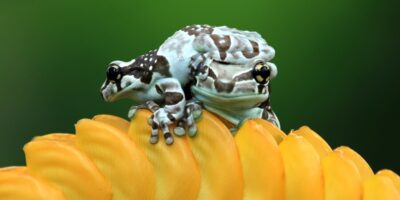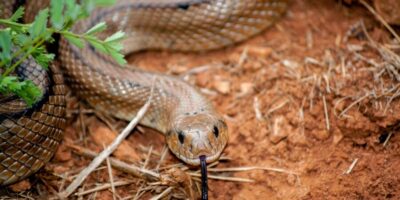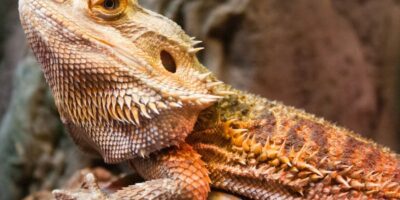Ball pythons are amazing pets known for their docile nature and beautiful patterns. These snakes are native to Africa and have become popular pets worldwide. When it comes to their habitat needs, ball pythons require a secure and spacious enclosure, preferably a terrarium or a glass tank with a secure lid. They need a temperature gradient in their habitat, with a warm side ranging from 88-92°F (31-33°C) and a cooler side around 78-80°F (25-27°C).
A proper lighting setup, including a heat source and UVB lighting, is essential for their well-being. Additionally, ball pythons need a suitable substrate, hiding spots, and a water dish for hydration. It’s important to create a comfortable and enriching environment for these fascinating reptiles.
coconut fiber
Coconut fiber, also known as coir or coconut coir, is a natural material made from the outer husk of coconuts. It’s a widely used substrate for reptiles and other animals. To make coconut fiber, the husk is first removed from the mature coconut fruit. Then, the husk is soaked in water for an extended period to soften it. After soaking, the husk is beaten or mechanically processed to separate the fibers from the rest of the material. These fibers are then dried and processed further to create the coconut fiber substrate that is commonly used in reptile enclosures.
Coconut fiber is valued for its moisture retention, natural texture, and sustainability. It’s a popular choice among reptile owners, including those who keep ball pythons, due to its ability to mimic the snakes’ natural environment. Coconut fiber has several benefits as a substrate for ball pythons. First, it has excellent moisture retention properties, which can help maintain proper humidity levels in the enclosure. This is especially important for ball pythons, as they require a certain level of humidity for their health and shedding.
Coconut fiber is also natural and biodegradable, making it an environmentally friendly choice. Additionally, it provides a soft and comfortable surface for your snake to move around on. Coconut fiber is relatively dust-free, reducing the risk of respiratory issues for both you and your snake. Overall, coconut fiber can create a natural and suitable habitat for your ball python.
Pros of using coconut fiber for ball pythons
Coconut fiber is an excellent substrate choice for ball pythons for several reasons. First, it has great moisture retention properties, which helps maintain the humidity levels necessary for ball pythons‘ healthy shedding process. Additionally, coconut fiber provides a natural texture that mimics the snakes’ natural habitat, allowing them to exhibit their natural behaviors. It also helps with odor control, keeping the enclosure smelling fresh. Overall, coconut fiber substrate creates a comfortable and natural environment for ball pythons to thrive in.
Coconut fiber is an amazing substrate for ball pythons because it has a natural texture that mimics their wild habitat. It’s also great at holding moisture, which helps maintain the necessary humidity levels for these snakes. Another bonus is its odor control properties, keeping the enclosure smelling fresh. So, with coconut fiber, you get the best of both worlds – a substrate that provides a natural feel for your ball python and helps create a healthy and comfortable environment.
Cons of using coconut fiber for ball pythons
Let’s dive into the potential cons of using coconut fiber as a substrate for ball pythons. One consideration is that coconut fiber can retain moisture quite well, which may lead to higher humidity levels than desired in the enclosure. This can be a challenge if you struggle to maintain proper humidity levels. Additionally, coconut fiber can sometimes be dusty, which may cause respiratory issues for both you and your snake. It’s important to ensure proper ventilation and regularly clean the enclosure to prevent any potential issues.
Lastly, coconut fiber can be more expensive compared to other substrate options. Considering these factors, it’s essential to weigh the pros and cons and choose the substrate that best suits your specific needs and the needs of your ball python. While coconut fiber is a popular substrate choice for ball pythons, it’s important to be aware of a few potential drawbacks.
One consideration is the possibility of mold growth if the substrate becomes excessively wet or if proper ventilation is not maintained. It’s crucial to monitor the moisture levels and ensure proper airflow to prevent mold formation. Additionally, if the coconut fiber is not kept clean and dry, there is a risk of mite infestations. Regular cleaning and maintenance of the enclosure will help mitigate these potential issues and keep your ball python’s habitat healthy and safe.
Alternatives to coconut fiber
If you’re looking for alternative substrate options for your ball python, there are a few to consider. One popular choice is aspen bedding, which is made from shredded aspen wood. It provides a soft and natural texture, and it’s easy to spot-clean. Another option is cypress mulch, which retains moisture well and creates a natural-looking environment. Paper-based substrates, such as newspaper or paper towels, are also commonly used for their ease of cleaning and affordability. Ultimately, the choice of substrate depends on your preferences and the specific needs of your ball python.
Benefits of aspen bedding
Aspen bedding has several benefits as a substrate for ball pythons. Firstly, it provides a soft and natural texture, which mimics the snake’s natural environment. This can be more comfortable for your ball python to move around on. Secondly, aspen bedding is easy to spot-clean, making it convenient for maintaining a clean enclosure. Additionally, it is relatively dust-free, which can be beneficial for both you and your snake’s respiratory health. Lastly, aspen bedding is an affordable option compared to some other substrates.
Conclusion
To wrap it up, we’ve discussed the benefits of using coconut fiber as a substrate for ball pythons, including its natural texture, moisture retention capabilities, and odor control properties. However, it’s important to be mindful of potential issues like mold growth and mite infestations if not properly maintained. If you prefer to explore other options, aspen bedding, cypress mulch, and paper-based substrates are worth considering. Ultimately, the choice of substrate depends on your preferences and the specific needs of your ball python.




